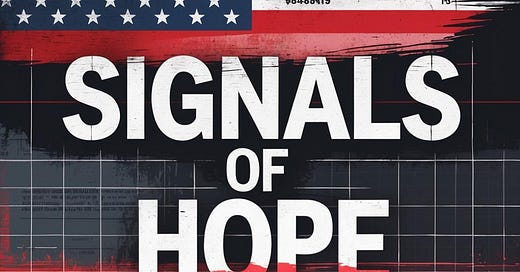Mutual aid has emerged as a powerful and hopeful response to disasters, exemplifying human solidarity and resilience in the face of systemic failures. Rooted in principles of reciprocity, shared humanity, and community-driven care, mutual aid efforts have repeatedly demonstrated their ability to fill critical gaps left by institutional responses during crises.
Mutual Aid Disaster Relief’s Climate Response
Mutual Aid Disaster Relief has ramped up efforts to address the increasing frequency of climate-related disasters such as hurricanes, wildfires, and flooding. Their decentralized approach involves listening to affected communities and providing supplies, medics, work crews, and grassroots support tailored to survivors' self-determined needs. By eliminating bureaucratic barriers, they empower marginalized communities to lead their own recovery processes.
Examples of Mutual Aid in Action
1. Chicago’s Local Mutual Aid Networks
Chicago has seen a surge in mutual aid initiatives addressing food insecurity, housing needs, and migrant support:
Love Fridge operates free fridges across neighborhoods for food sharing.
Market Box distributes healthy food from local farmers to families on Chicago's South Side.
Pilsen Solidarity Network hosts free markets for exchanging food, clothing, and other essentials.
Rogers Park Food Not Bombs redistributes surplus food from grocery stores and restaurants to prevent waste and support the community.
2. Southeast Disaster Operations Group (SEADOG)
SEADOG, a regional mutual aid network in the southeastern United States, has been instrumental in coordinating emergency responses to climate-related disasters like hurricanes and flooding. This network brings together emergency management agencies to share resources, information, and support during crises. In 2024, SEADOG played a critical role in responding to Hurricane Ophelia, which devastated parts of the Gulf Coast. By pooling equipment, personnel, and expertise across state lines, SEADOG ensured faster and more effective disaster relief efforts, particularly in underserved rural areas
3. National Domestic Workers Alliance (NDWA) Mutual Aid Programs
The National Domestic Workers Alliance (NDWA) expanded its mutual aid initiatives in 2024 to support domestic workers—housecleaners, nannies, and homecare providers—facing economic and social vulnerabilities. The alliance provided direct cash assistance, food distribution, and legal aid to workers affected by natural disasters and economic instability. NDWA also used these efforts to build community power, advocating for policy changes like wage protections and disaster relief funding for domestic workers. Their initiatives have been especially impactful in politically challenging states like North Carolina, where they secured temporary funding increases for childcare and homecare workers
4. Mexico-U.S. Borderlands Aid
Organizations like No More Deaths provide direct aid to migrants crossing the Mexico-U.S. border by leaving water and supplies in the desert to prevent deaths from dehydration or exposure. This mutual aid effort addresses the humanitarian crisis exacerbated by migration policies and climate challenges4.
5. Community Fridge Initiatives
Across the U.S., community fridge networks have expanded as a grassroots solution to food insecurity. These "freedges" are placed in public spaces or hosted by businesses and nonprofits, allowing individuals to take what they need or leave what they can. The initiative promotes trust and reciprocity within communities
Core Principles of Mutual Aid
Solidarity, Not Charity: Unlike charity models that impose external solutions, mutual aid emphasizes collaboration and respect for community knowledge. It empowers individuals by centering their voices and needs rather than framing them as passive recipients of aid.
Decentralized Action: Mutual aid thrives on grassroots organization and horizontal decision-making, allowing communities to respond quickly and effectively during crises.
Building Resilience: Beyond addressing immediate needs, mutual aid fosters long-term community strength by creating networks of trust and cooperation that endure beyond the crisis.
Why This is a Signal of Hope
Mutual aid exemplifies humanity's capacity for compassion, ingenuity, and collective action during crises. It offers a model for reimagining disaster relief as an inclusive and empowering process while addressing systemic inequities. These efforts remind us that even in the darkest times, communities can come together to build hope from despair—proving that "only the people save the people."
#Mutual Aid #Disaster Relief #Grassroots Efforts #Community Resilience #Climate Disasters #Emergency Management #Solidarity, Not Charity #Local Activism



